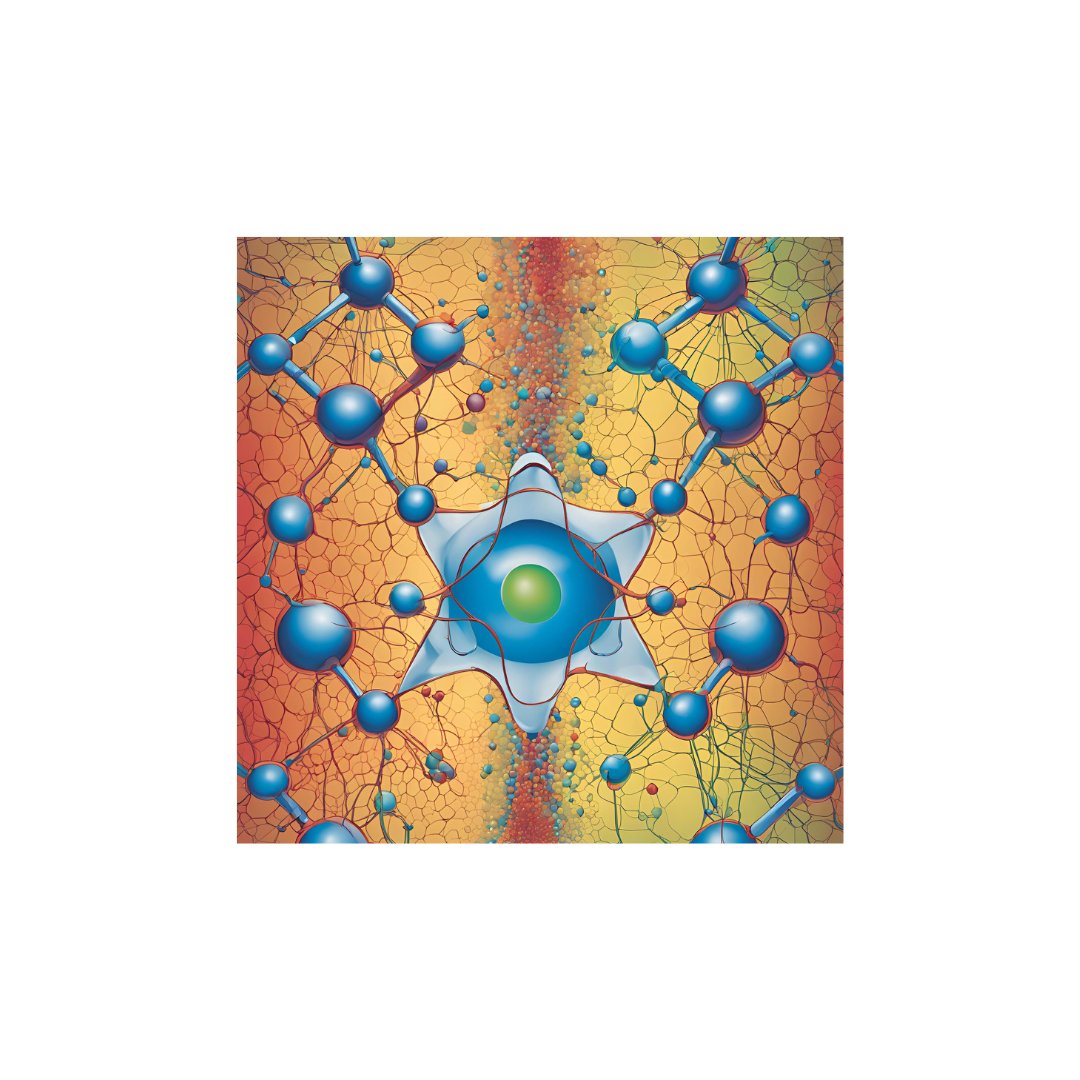The Sun: The Ultimate Source of Life on Earth
The Sun, a massive ball of hydrogen and helium gas, is more than just a bright object in the sky. It is the engine that drives life on Earth, influencing everything from the air we breathe to the food we eat. Understanding how the Sun powers life involves exploring its physical processes, the nature of light, and its interaction with Earth and its environment.
The Role of the Sun in Life on Earth
The Sun is essential for life on Earth for several reasons:
- Energy Source: The Sun provides the energy necessary for photosynthesis, the process through which plants convert sunlight, carbon dioxide, and water into glucose and oxygen. This forms the base of the food chain, supporting all life forms.
- Climate and Weather: Solar radiation heats Earth’s surface unevenly, driving atmospheric circulation and weather patterns.
- Water Cycle: The Sun powers the water cycle by causing evaporation from oceans, lakes, and rivers, leading to precipitation.
- Vitamin D Synthesis: Humans and other animals rely on sunlight for synthesizing vitamin D, essential for bone health and immune function.
How the Sun Produces Light
At the core of the Sun, hydrogen nuclei fuse under immense pressure and temperature to form helium, releasing vast amounts of energy in the process. This process is called nuclear fusion. The energy travels outward from the Sun’s core, through its layers, and finally escapes as light and heat.
The Sun’s Layers:
- Core: The site of nuclear fusion, with temperatures exceeding 15 million degrees Celsius.
- Radiative Zone: Energy moves outward as electromagnetic radiation.
- Convective Zone: Energy is transferred through convection currents.
- Photosphere: The visible surface of the Sun that emits light.
- Corona: The Sun’s outer atmosphere, visible during a solar eclipse.
What Is Light?
Light is a form of electromagnetic radiation (EM radiation). It is both a wave and a particle, consisting of photons—packets of energy. Light does not require a medium to travel, which is why it can move through the vacuum of space.
Characteristics of Light:
- Wavelength and Frequency: Determines the type of light (visible, ultraviolet, infrared, etc.).
- Speed: In a vacuum, light travels at 299,792 kilometers per second.
- Interaction with Matter: Light can be absorbed, reflected, refracted, or scattered.
How Humans See Light
The human eye perceives light within the visible spectrum, a narrow range of wavelengths from approximately 400 to 700 nanometers. Photoreceptor cells in the retina, called rods and cones, convert light into electrical signals, which are interpreted by the brain as images.
- Rods: Sensitive to low light and detect shades of gray.
- Cones: Detect color in bright light, with different cones sensitive to red, green, and blue light.
Light’s Journey from the Sun to Earth
Light from the Sun takes about 8 minutes and 20 seconds to reach Earth. It travels in a straight line through the vacuum of space until it interacts with objects:
- Direct Travel: Sunlight hits Earth’s surface directly, providing heat and light.
- Reflection: Light reflects off surfaces like water, snow, and even the Moon.
- Scattering: Earth’s atmosphere scatters sunlight, giving the sky its blue color.
- Absorption: Molecules absorb certain wavelengths, which is why we see different colors.
The Role of the Moon in Reflecting Sunlight
The Moon does not emit its own light but reflects sunlight. When sunlight hits the Moon’s surface:
- The Moon absorbs some wavelengths and reflects others, depending on its surface composition.
- Reflected light travels to Earth, allowing us to see the Moon at night.
Why Isn’t Light Visible Between the Sun and Moon?
Light is not inherently visible in space unless it interacts with matter, like dust or gas, to scatter or reflect it toward our eyes.
The Complete Cycle: How the Sun Empowers Life on Earth
- Light Production: The Sun generates light through nuclear fusion in its core.
- Light Travels to Earth: Solar radiation reaches Earth, providing energy.
- Photosynthesis: Plants absorb sunlight, converting it into chemical energy stored in glucose.
- Energy Transfer: Herbivores consume plants, transferring energy up the food chain.
- Climate Regulation: The Sun’s heat drives atmospheric circulation, influencing weather and climate.
- Water Cycle: Solar energy causes evaporation, powering the water cycle.
- Night Illumination: The Moon reflects sunlight, providing light during the night.
The Physics of Light and Energy Transmission
- Electromagnetic Spectrum Beyond Visible Light
- The Sun emits not just visible light but a spectrum of electromagnetic radiation, including ultraviolet (UV), infrared (IR), radio waves, and X-rays. Each part of the spectrum plays a role in natural processes:
- UV Light: Triggers the production of vitamin D in humans but can also cause sunburn and DNA damage.
- Infrared Radiation: Heats the Earth’s surface, playing a significant role in regulating global temperatures.
- The Sun emits not just visible light but a spectrum of electromagnetic radiation, including ultraviolet (UV), infrared (IR), radio waves, and X-rays. Each part of the spectrum plays a role in natural processes:
- Photon Interaction with Matter
- Photons, the particles of light, interact with atoms and molecules in various ways:
- Excitation: Electrons in an atom absorb photons, moving to higher energy levels.
- Emission: Excited electrons release energy as photons when returning to their original state, often producing fluorescence or phosphorescence.
- Photons, the particles of light, interact with atoms and molecules in various ways:
- The Doppler Effect of Light
- The Sun’s light shifts in wavelength due to the movement of celestial bodies. This effect is used in astronomy to study the motion of stars and planets relative to Earth.
How Light Sustains Earth’s Ecosystems
- Primary Productivity
- The Sun drives primary productivity, the process by which plants, algae, and cyanobacteria produce organic compounds from sunlight, forming the foundation of ecosystems. This occurs in both terrestrial and aquatic environments.
- Phototropism
- Plants and certain organisms grow or orient themselves toward sunlight to maximize energy absorption, demonstrating how light influences growth and behavior.
- Impact on Coral Reefs
- Coral reefs depend on sunlight for symbiotic algae (zooxanthellae) that live within coral tissues. These algae perform photosynthesis, providing energy to corals and maintaining marine biodiversity.
Advanced Atmospheric Interactions
- Auroras (Northern and Southern Lights)
- Auroras occur when charged particles from the Sun interact with Earth’s magnetic field and atmosphere, exciting gases like oxygen and nitrogen to emit colorful light.
- Solar Radiation Management by Earth’s Atmosphere
- The atmosphere filters harmful radiation, particularly UV-C and most UV-B rays, via the ozone layer, ensuring life’s safety while allowing essential wavelengths to reach the surface.
- Albedo Effect
- Earth’s surfaces, such as ice caps and forests, have varying levels of reflectivity (albedo), affecting how much sunlight is absorbed or reflected back into space. This influences global temperature regulation.
- Greenhouse Effect
- Solar radiation absorbed by Earth is re-emitted as infrared radiation. Greenhouse gases (CO₂, CH₄, H₂O vapor) trap this heat, maintaining a livable climate.
The Role of the Sun in Earth’s Cycles
- Day-Night Cycle (Diurnal Cycle)
- The rotation of Earth exposes different regions to sunlight, creating a rhythm of light and dark. This regulates biological clocks or circadian rhythms in living organisms.
- Seasonal Changes
- Earth’s axial tilt results in varying solar exposure, creating seasons. This drives behaviors like migration, hibernation, and flowering in plants and animals.
- Solar Influence on Ocean Currents
- The Sun heats Earth’s oceans unevenly, driving thermohaline circulation. These ocean currents regulate climate by distributing heat around the globe.
- Solar Tides
- While lunar gravity dominates tides, the Sun’s gravity also influences them, creating spring tides (higher tides) when Sun and Moon align.
Scientific Insights into Light
- Polarization of Light
- Light waves can vibrate in multiple directions. When restricted to one plane, the light is polarized. Polarization is used in technologies like sunglasses and LCD screens.
- Diffraction of Light
- Light bends around obstacles or passes through narrow slits, spreading out in patterns. This is critical in understanding wave-particle duality.
- Interference of Light
- When two light waves overlap, they can constructively or destructively interfere, creating phenomena like the iridescence seen in soap bubbles or peacock feathers.
- Photon Momentum
- Photons carry momentum, which exerts pressure. This phenomenon, called radiation pressure, influences comet tails and is used in advanced technologies like solar sails for spacecraft.
The Sun’s Extended Influence
- Solar Flares and Coronal Mass Ejections (CMEs)
- The Sun occasionally releases intense bursts of energy (solar flares) and plasma (CMEs). These events can disrupt satellite communications, power grids, and navigation systems.
- Solar Wind
- Streams of charged particles emitted by the Sun create the heliosphere, a protective bubble shielding the solar system from interstellar radiation.
- Geomagnetic Storms
- Interactions between solar wind and Earth’s magnetic field cause geomagnetic storms, affecting technologies like GPS and radio communication.
- Space Weather and Life
- Understanding solar activity helps protect astronauts and technology in space, emphasizing the Sun’s far-reaching impact.
The Evolutionary Perspective
- Origins of Life
- Solar energy likely played a role in the chemical reactions that gave rise to life on Earth in the early oceans, possibly by powering the synthesis of complex organic molecules.
- Evolution of Vision
- The Sun’s light shaped the evolution of photoreceptors in animals, leading to the development of advanced visual systems.
- Heat Adaptation in Organisms
- Solar radiation influenced adaptations like pigmentation in skin (melanin production) to protect against UV rays.
Harnessing the Sun’s Energy
- Solar Power
- Solar panels convert sunlight into electricity using photovoltaic cells, a sustainable energy solution.
- Photosynthesis Optimization
- Researchers are engineering crops with enhanced photosynthetic efficiency to meet global food demands.
- Solar-Driven Desalination
- Technologies use solar heat to convert seawater into freshwater, addressing water scarcity.
Philosophical and Cultural Impact of the Sun
- Symbol of Life
- Across cultures, the Sun is revered as a symbol of life, vitality, and divinity.
- Timekeeping
- Ancient civilizations used the Sun’s movement to develop calendars and predict agricultural cycles.
- Artistic Inspiration
- The Sun has inspired art, literature, and mythology, representing creation, destruction, and renewal.
Future Research and Technologies
- Space-Based Solar Power
- Scientists are exploring harvesting solar energy directly in space and beaming it to Earth.
- Sunlight in Medicine
- Controlled UV exposure is studied for treating conditions like psoriasis and jaundice.
- Solar Analytics
- Advanced telescopes like the Parker Solar Probe study the Sun’s behavior, helping us prepare for solar activity’s impacts on Earth.
The Sun is not merely a star but the cornerstone of Earth’s life-supporting system. From driving fundamental biological processes to influencing global climate, the Sun’s reach extends to every facet of life. As we deepen our understanding and innovate to harness its energy, the Sun remains our most vital and inspiring cosmic neighbor.
The Sun as a Cosmic Powerhouse: Exploring Deeper Perspectives
Astrophysical Perspectives
- Formation of the Sun
- The Sun formed approximately 4.6 billion years ago from a collapsing molecular cloud of gas and dust. Gravitational forces compressed this cloud, heating its core to initiate nuclear fusion, making it a second-generation star enriched with heavier elements from earlier supernovae.
- Sun’s Lifecycle
- The Sun is currently a main-sequence star, where hydrogen fuses into helium. In 5 billion years, it will expand into a red giant, engulfing inner planets, and eventually shed its outer layers to form a white dwarf, surrounded by a planetary nebula.
- Solar Oscillations (Helioseismology)
- The Sun experiences oscillations or “solar quakes,” revealing details about its internal structure, such as density, temperature, and rotational patterns.
Quantum and Particle Physics Perspectives
- Quantum Tunneling in Fusion
- Nuclear fusion at the Sun’s core occurs due to quantum tunneling. Despite insufficient thermal energy to overcome the Coulomb barrier between protons, quantum mechanics allows fusion via probabilistic particle behavior.
- Neutrino Emissions
- The Sun emits vast numbers of neutrinos—nearly massless particles produced during nuclear fusion. Studying these neutrinos provides direct insights into the Sun’s core processes.
- Proton-Proton Chain Reaction
- The Sun’s primary fusion process is the proton-proton chain, where four hydrogen nuclei combine to form a helium nucleus, releasing energy as gamma rays and neutrinos.
Interdisciplinary Perspectives
- Thermodynamics of the Sun
- The Sun represents a near-perfect blackbody radiator, emitting energy according to Planck’s law. Its surface temperature (about 5,500°C) determines the peak wavelength of its emitted light, aligning with visible light.
- Sun’s Gravitational Influence
- The Sun’s immense gravity stabilizes the solar system, keeping planets, asteroids, and comets in orbit. Its gravitational pull influences Earth’s axial tilt, contributing to the stability of seasons.
- Role in Geology
- The Sun indirectly powers geological processes like weathering, erosion, and sediment transport by driving Earth’s water cycle and atmospheric dynamics.
Ecological and Biological Perspectives
- Marine Ecosystems
- In oceans, the Sun’s light penetrates to a depth of about 200 meters, enabling photosynthesis by phytoplankton. These organisms produce over 50% of Earth’s oxygen and form the base of aquatic food webs.
- Circadian Rhythms Across Species
- The Sun regulates biological clocks in plants, animals, and humans through changes in light intensity and duration, influencing behavior, hormone production, and metabolic processes.
- Dormancy and Sunlight Cycles
- Trees and certain animals enter dormancy or hibernation during reduced sunlight periods (winter), showcasing adaptations to seasonal solar variations.
Technological and Human-Centric Perspectives
- Solar-Powered Agriculture
- Controlled-environment agriculture uses advanced solar panels and natural sunlight to optimize crop growth, reducing dependence on fossil fuels.
- Solar Energy Innovations
- Advances in perovskite solar cells offer higher efficiency and flexibility compared to traditional silicon-based cells, enabling more widespread adoption of solar energy.
- Solar Storm Protection
- As solar storms grow in intensity, technologies like geomagnetic shielding and hardened satellites are being developed to protect Earth’s power grids and communications systems.
Philosophical and Psychological Perspectives
- Sun as a Symbol of Renewal
- In many cultures, the Sun symbolizes life, renewal, and enlightenment, influencing rituals, art, and spiritual beliefs.
- Seasonal Affective Disorder (SAD)
- Sunlight exposure plays a role in mental health by regulating serotonin production. Reduced sunlight during winter months can lead to SAD, highlighting the Sun’s psychological impact.
- Human Connection to Celestial Cycles
- Humanity’s deep connection to the Sun is evident in ancient monuments like Stonehenge and the Pyramids, aligned with solar solstices and equinoxes.
Sun’s Role in Earth’s Atmosphere and Magnetosphere
- Solar Radiation Pressure
- Radiation pressure from the Sun influences comet tails, causing them to always point away from the Sun regardless of the comet’s motion.
- Ionosphere Creation
- Ultraviolet and X-rays from the Sun ionize Earth’s upper atmosphere, creating the ionosphere, crucial for radio wave propagation.
- Magnetosphere Interaction
- Earth’s magnetic field deflects solar wind, creating a magnetosphere that shields the planet while enabling phenomena like the Van Allen radiation belts.
Cosmological Perspectives
- Sun’s Role in Galactic Ecology
- The Sun is part of the Milky Way’s galactic ecosystem, orbiting the galactic center every 225-250 million years. Its gravitational interactions with nearby stars influence the solar system’s dynamics.
- Comparison with Other Stars
- Although the Sun is an average-sized star, its stability and energy output over billions of years make it uniquely suited for supporting life compared to more massive or variable stars.
Energy Transformation and Recycling
- Solar Energy Conversion
- Sunlight drives Earth’s energy economy by enabling chemical energy storage in fossil fuels, which originated from ancient photosynthetic organisms.
- Role in Climate Oscillations
- Variations in solar output contribute to climate oscillations like Milankovitch cycles, influencing glacial and interglacial periods.
- Earth’s Carbon Cycle
- Solar-driven photosynthesis and weathering processes are essential components of the global carbon cycle, which regulates atmospheric CO₂ levels.
Emerging Scientific Insights
- Solar Cycle Dynamics
- The Sun undergoes an 11-year solar cycle, alternating between periods of high and low sunspot activity. These cycles influence Earth’s space weather, atmospheric temperatures, and satellite operations.
- Solar Superflares
- Rare, powerful solar events called superflares could have catastrophic effects on modern technology, underscoring the need for solar monitoring.
- Exoplanetary Implications
- Studies of the Sun’s energy output inform scientists about the habitability of exoplanets orbiting stars of similar type.
Hypothetical Scenarios: A World Without the Sun
- Immediate Effects
- Within minutes of the Sun ceasing to shine, photosynthesis would halt, plunging ecosystems into collapse.
- Temperature Decline
- Earth would rapidly cool, freezing surface water within weeks and rendering the planet inhospitable.
- Long-Term Consequences
- Without solar energy, tectonic and volcanic activity might become the sole energy sources for extremophiles, creating a radically different biosphere.
Conclusion
The Sun’s influence extends across physics, biology, culture, and technology, permeating every aspect of life on Earth. It is not merely a star but the architect of Earth’s habitability, a catalyst for evolution, and a source of inspiration. Continued exploration of the Sun will deepen our understanding of life, energy, and the universe itself.
The Sun is the heart of Earth’s ecosystem. It not only fuels biological processes but also shapes the physical environment. Understanding the Sun’s energy, the nature of light, and its journey to Earth reveals the intricate web of interactions that sustain life. From powering photosynthesis to driving the water cycle and climate, the Sun is truly the source of all life as we know it.





